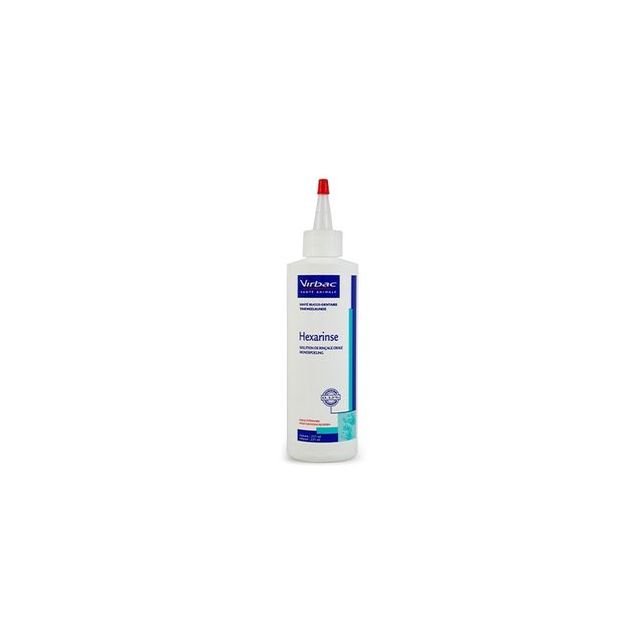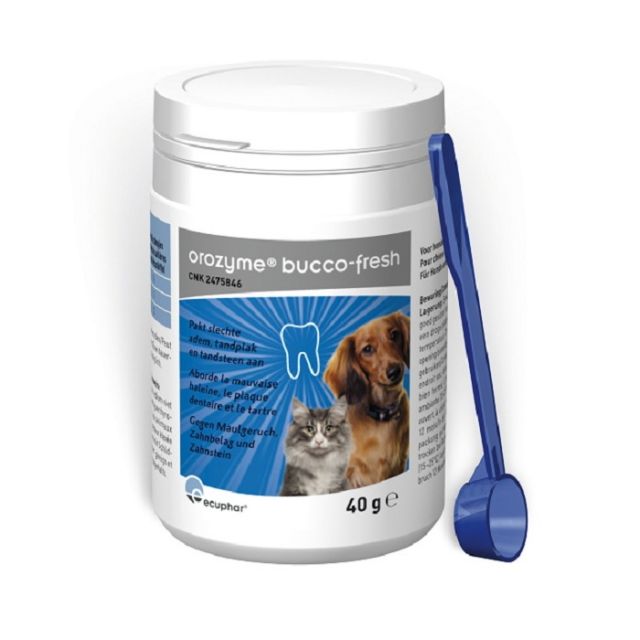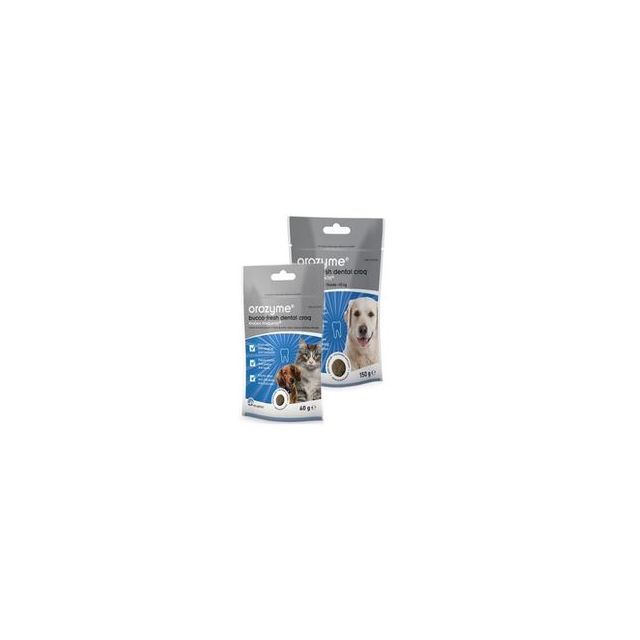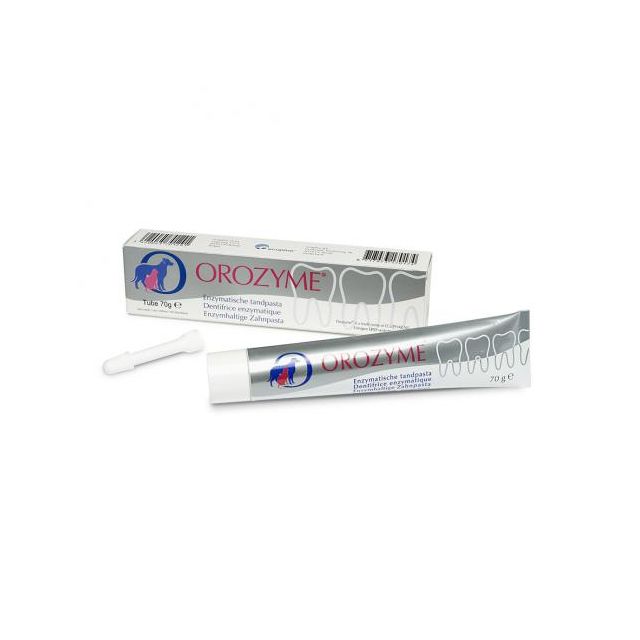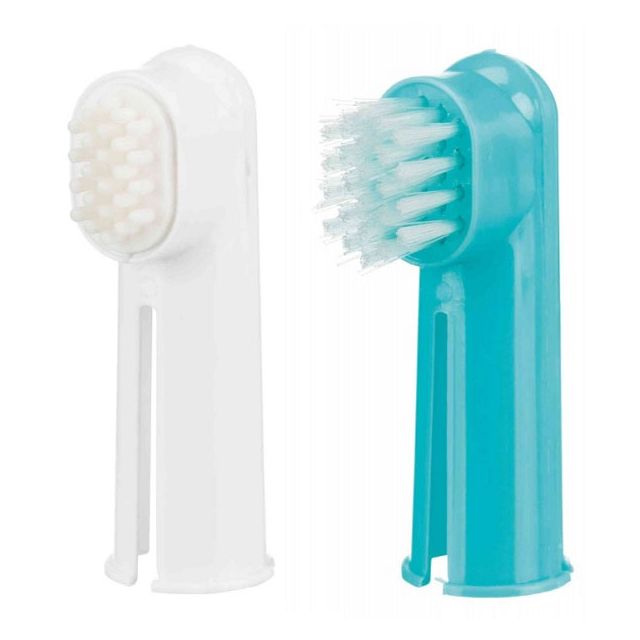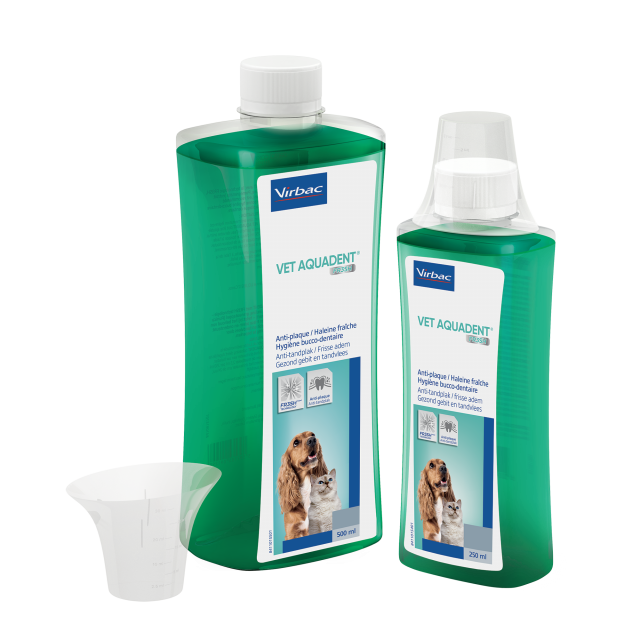The teeth of the cat
Cats are carnivores and have a dentition designed for catching and tearing prey. Unfortunately, dental problems are common in cats. Some of these problems can be prevented by brushing their teeth. However, for most cats, that's not so straightforward... Pharmacy4pets explains how you can still try to take care of your cat's teeth as best as possible.
What does a cat's normal dentition consist of?
Like humans, cats are born without teeth. Two to six weeks after birth, their milk teeth emerge. The milk teeth consist of twelve incisors, four canines, and ten molars. Between three and six months, cats replace their milk teeth with permanent teeth. The permanent dentition consists of twelve incisors, four canines, and fourteen molars (ten premolars and four molars).
Dental problems in cats
Dental problems are very common in cats. Many cats develop plaque and tartar as they age. Additionally, cats may suffer from specific dental/mucosal conditions.
Feline Odontoclastic Resorptive Lesions (FORL)
In FORL, odontoclasts, cells involved in tooth resorption, break down the tooth. This leads to 'resorptive lesions' or holes. These holes begin on the outer surface of the tooth or molar and continue to expand. These holes are very painful for the cat. The cause of FORL is unknown, but it often affects multiple teeth and molars. The only possible treatment is to extract the affected tooth or molar.
Gingivitis Stomatitis Complex (GSC) in cats
In Gingivitis Stomatitis Complex (GSC), there is inflammation of the gums (gingivitis) and other mucous membranes in the mouth (stomatitis). The cause of GSC is not entirely clear, but an excessive reaction of the mucous membranes to plaque plays a significant role. Cats with Gingivitis Stomatitis Complex often have inflamed gums from a young age. These cats are often calmer in behavior and may have difficulty eating. Unfortunately, the only effective treatment is to extract all teeth and molars.
How do I recognize dental problems in my cat?
As an owner, you may not immediately notice that your cat is having dental issues. Most cats continue to eat despite having a sometimes very poor dental condition. However, some symptoms to watch for include:
- Bad breath.
- Excessive saliva production.
- Altered eating behavior: difficulty or slowness in eating, chewing on one side, lifting the head while eating, dribbling food.
- Bleeding gums or blood from the mouth.
- Head shaking.
- Wiping the mouth with paws (especially after eating).
- Altered behavior or reduced activity: cats often express pain through subtle changes in behavior, posture, or facial expression.
Dental care for cats
Tartar and plaque can be prevented by brushing teeth. However, this is easier said than done for most cats. Some dental conditions such as FORL and GSC are also not always controllable. Preventing dental problems in cats is therefore more challenging than in dogs. Special dietary foods and dental care chew products can play an important role in maintaining your cat's dental health.
Brushing your cat's teeth
Brushing teeth with a real toothbrush is only feasible for very few cats. Sometimes it works with a finger toothbrush. If that doesn't work either, an alternative to brushing your cat's teeth is to wipe them with a rough, non-fluffy piece of fabric wrapped around your finger (e.g., a bandage). If you want to try brushing your cat's teeth, it's important to consider the following:
- Building up slowly is most important!
- Start by gently rubbing your cat's lips over their teeth and molars.
- Avoid touching the whiskers, as this is unpleasant for your cat.
- "Fiddle" the tip of your finger wrapped with the piece of fabric between your cat's lips and rub over the teeth.
- Start with the canines and upper molars, gradually expanding to the lower molars, and finally the incisors.
- The mouth can remain closed during this process. Adding chicken- or liver-flavored toothpaste can help.
- If this goes well, you can consider transitioning to a (finger) toothbrush.
By removing plaque in this way several times a week, preferably daily, you help keep your cat's teeth clean and healthy.
Alternatives to brushing your cat's teeth
If brushing your cat's teeth is not possible, special food can help maintain the teeth and molars of your cat. This food consists of large chunks, forcing your cat to chew. The chunks are also designed so that your cat's molars must penetrate deeply before they split: an abrasive effect. Special food is often recommended after a dental cleaning.
There are also snacks that encourage chewing and thus help care for the teeth. For example, Bogadent Plaque-Stop Chips. Additionally, the formation of tartar from plaque can be inhibited by special substances that can be added to your cat's drinking water, such as Bogadent Dental Water Additive or Vet Aquadent Fr3sh.
If brushing your cat's teeth is not possible, but you can brush your cat's teeth and molars with your finger, you can add Hexagel to clean the pockets in the gums and reduce plaque formation. If you have any questions about our products or your cat's dental care, please contact us.

